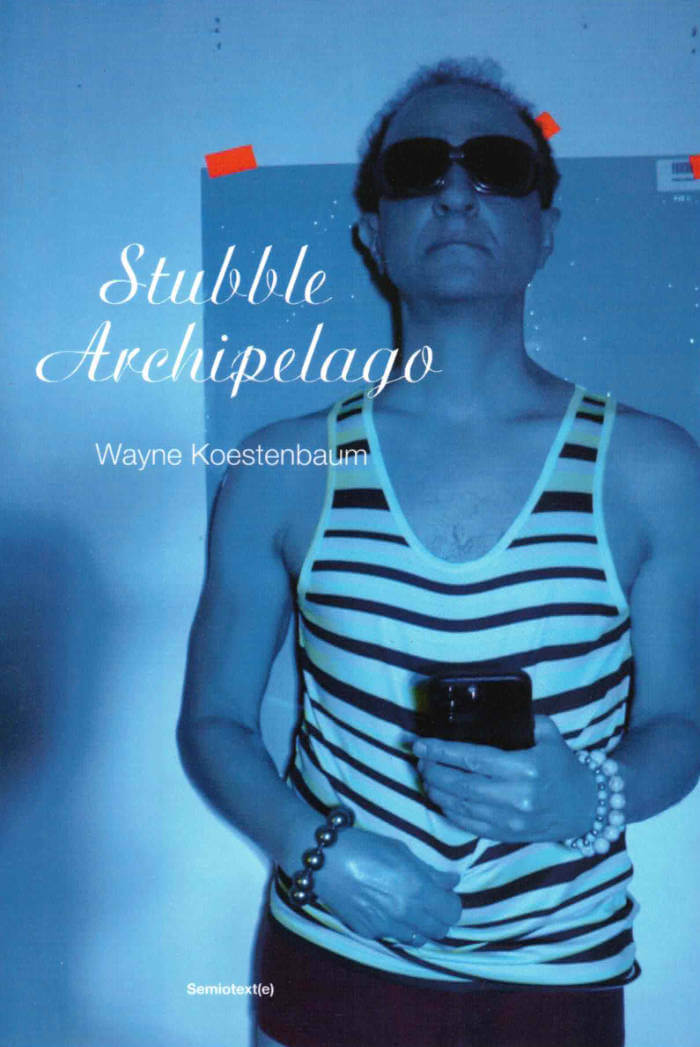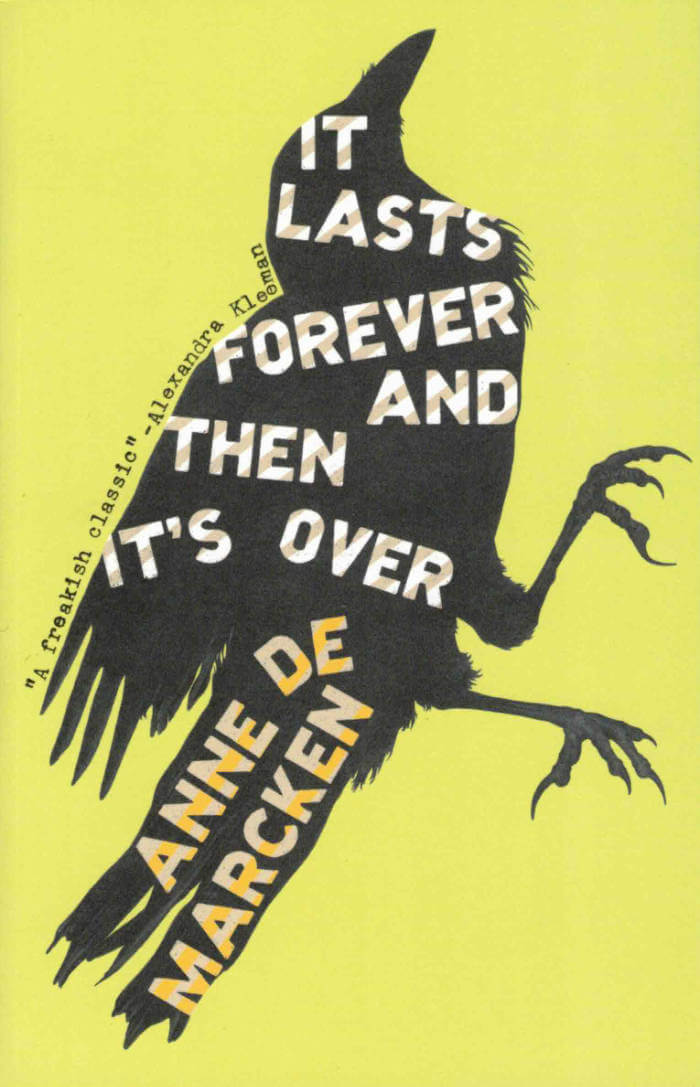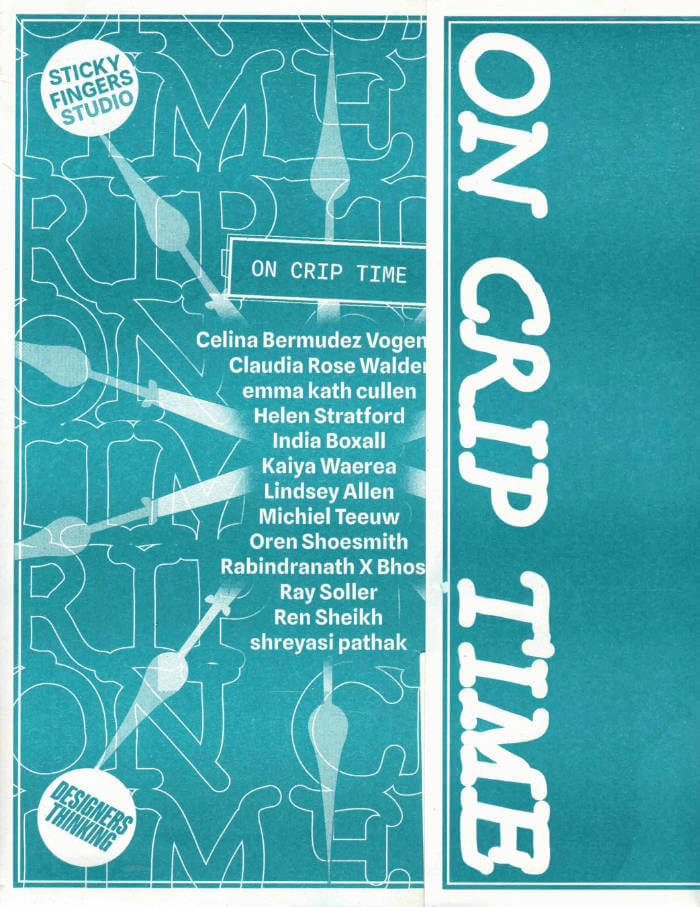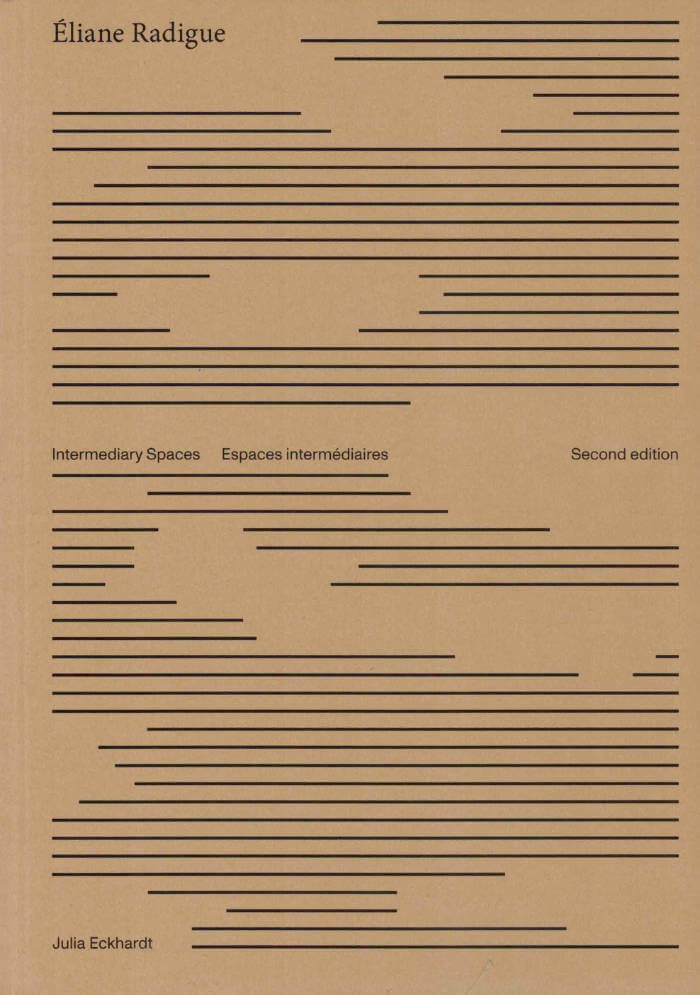Books
Books
published in 2024

Subcontinental Synthesis
The history of India's first electronic music studio founded in 1969 at the National Institute of Design in Ahmedabad by David Tudor.
Subcontinental Synthesis explores the history of India's first electronic music studio, founded in 1969 at the National Institute of Design in Ahmedabad with the support of the composer David Tudor. The essays and writings unravel the narrative and context surrounding the studio as well as the work of the Indian composers who created groundbreaking recordings during its four years of activity. The texts reflect on the role of electronic music within a post-independence India, considering its interconnections with experimental design, radical pedagogies, and the international avant-garde, as well as the encircling conditions of Western ideological soft power within the global expansion of Modernism.
Contributors: Geeta Dayal, Alannah Chance, Matt Williams, Shilpa Das, Jinraj Joshipura, You Nakai, Rahila Haque, and Paul Purgas.

When Technology Was Female: Histories of Construction and Deconstruction, 1917-1989
Continuities and ruptures between the early Soviet (c.1917) and late state socialist (c.1980s) periods are examined through detailed discussions of a wide range of women’s artistic practices, including Liubov Popova, Varvara Stepanova, Tina Bara, Sibylle Bergemann, Věra Chytilová, Natalia LL, Dora Maurer, the Erfurt Women Artists’ Group, Běla Kolářová, Evelyn Richter, Zorka Ságlová, and many others. Featuring over one hundred images of works ranging from costume sketches and stage maquettes, to photographs and film stills, the book offers a sweeping study of over seventy years of women’s artistic production and is meant for any reader engaged at the intersections of feminist and (post-)socialist art histories.
Graphic design: Experimental Jetset
Managing editor: Megan Hoetger
Series editor: Frédérique Bergholtz
Copy editor: Janet Grau

Playboy
The prequel to Love Me Tender, narrating Debré's transformation from affluent career woman to broke single lesbian and writer.
I see all her beauty, I see the beauty of women. I see my own body, new. I tell myself there are so many things that are possible.
First published in France in 2018, Playboy is the first volume of Constance Debré's renowned autobiographical trilogy that describes her decision, at age forty-three, to abandon her marriage, her legal career, and her bourgeois Parisian life to become a lesbian and a writer.
The novel unfolds in a series of short, sharp vignettes. The narrator's descriptions of her first female lovers—a married woman fifteen years older than her, a model ten years her junior—are punctuated by encounters with her ex-husband, her father, and her son.
As Debré recently told Granta: “It was a bit like Saint Augustine and his conversion. In the same week, I had sex with a girl and I had the feeling that I could write. I had this incredible feeling that I could catch things, that life was there to be caught.”
Looking at the world through fresh eyes, the narrator of Playboy questions everything that once lay beneath the surface of her well-managed life. Laconic, aggressive, and radically truthful, she examines gender and marriage, selfishness and sacrifice, money and family, even the privilege inherent in her downward mobility.
Writing her way toward her own liberation, Debré chronicles the process that made her one of the most brilliant, important French writers today.

Notice
A classic queer text of trauma, written by one of the most talented novelists of her generation.
Published by Doubleday in 1994, Heather Lewis's chilling debut novel took place on the northeastern equestrian show-riding circuit, to which Lewis herself belonged in her teens. Expelled from boarding school, its fifteen-year-old narrator moves numbly through a world of motel rooms, heroin, dyke love, and doped horses. Kirkus Reviews found it “brutal, sensual, honest, seductive … a powerful debut,” while the New York Times found the book “grating and troublesome … it's difficult to imagine a more passive specimen.”
Almost immediately, Lewis began writing Notice, a novel that moves even further into dark territory. The teenaged narrator Nina begins turning tricks in the parking lot of the train station near the Westchester County home of her absent parents. She soon falls into a sadomasochistic relationship with a couple. Arrested, she's saved by a counselor and admitted to a psychiatric facility. But these soft forms of control turn out to be even worse. Writing in the register of an emotional fugue state, Notice's helpless but all-knowing narrator is as smooth and sharp as a knife.
Rejected by every publisher who read it during Lewis's life, Notice was eventually published by Serpent's Tail in 2004, two years after her death. The book, long out of print, emerged as a classic queer text of trauma, written by one of the most talented novelists of her generation.

Heroines, New Edition
A manifesto reclaiming the wives and mistresses of literary modernism that inspired a generation of writers and scholars, reissued after more than a decade.
On the last day of December 2009, Kate Zambreno, then an unpublished writer, began a blog called "Frances Farmer Is My Sister," arising from her obsession with literary modernism and her recent transplantation to Akron, Ohio, where her partner held a university job. Widely reposted, Zambreno's blog became an outlet for her highly informed and passionate rants and melancholy portraits of the fates of the modernist “wives and mistresses," reclaiming the traditionally pathologized biographies of Vivienne Eliot, Jane Bowles, Jean Rhys, and Zelda Fitzgerald: writers and artists themselves who served as male writers' muses only to end their lives silenced, erased, and institutionalized. Over the course of two years, Frances Farmer Is My Sister helped create a community of writers and devised a new feminist discourse of writing in the margins and developing an alternative canon.

Stubble Archipelago
Wild new adventures in word-infatuated flânerie from a celebrated literary provocateur.
This book of thirty-six poetic bulletins by the humiliation-advice-giver Wayne Koestenbaum will teach you how to cruise, how to dream, how to decode a crowded consciousness, how to find nuggets of satisfaction in unaccustomed corners, and how to sew a language glove roomy enough to contain materials gathered while meandering.
Koestenbaum wrote many of these poems while walking around New York City. He'd jot down phrases in a notebook or dictate them into his phone. At home, he'd incorporate these fragmented gleanings into overflowing quasi sonnets. Therefore each poem functions as a coded diary entry, including specific references to sidewalk events and peripatetic perceptions. Flirting, remembering, eavesdropping, gazing, squeezing, sequestering: Koestenbaum invents a novel way to cram dirty liberty into the tight yet commodious space of the sonnet, a fourteen-lined cruise ship that contains ample suites for behavior modification, libidinal experiment, aura-filled memory orgies, psychedelic Bildungsromane, lap dissolves, archival plunges, and other mental saunterings that conjure the unlikely marriage of Kenneth Anger and Marianne Moore. Carnal pudding, anyone? These engorged lyrics don't rhyme; and though each builds on a carapace of fourteen lines, many of the lines spawn additional, indented tributaries, like hoop earrings dangling from the stanzas' lobes.
Koestenbaum's poems are comic, ribald, compressed, symphonic. They take liberties with ordinary language, and open up new pockets for sensation in the sorrowing overcoat of the “now.” Imagine: the training wheels have been removed from poetry's bicycle, and the wheeling flâneur is finally allowed a word pie equal to fantasy's appetite. Stubble—a libidinal detail—matters when you're stranded on the archipelago of your most unsanctioned yet tenaciously harbored impulses.

A Short History of Trans Misogyny
An accessible, bold new vision for the future of intersectional trans feminism, called "one of the best books in trans studies in recent years" by Susan Stryker.
Why are trans women the most targeted of LGBT people? Why are they in the crosshairs of a resurgent anti-trans politics around the world? And what is to be done about it by activists, organizers, and allies?
A Short History of Transmisogyny is the first book-length study to answer these urgent but long overdue questions. Combining new historical analysis with political and activist accessibility, the book shows why it matters to understand trans misogyny as a specific form of violence with a documentable history. Ironically, it is through attending to the specificity of trans misogyny that trans women are no longer treated as inevitably tragic figures. They emerge instead as embattled but tenacious, locked in a struggle over the meaning and material stakes of gender, labor, race, and freedom.
The book travels across bustling port cities like New York, New Orleans, London and Paris, the colonial and military districts of the British Raj, the Philippines, and Hawai'i, and the lively travesti communities of Latin America.
The book shows how trans femininity has become legible as a fault line of broader global histories, including colonial government, the sex work industry, the policing of urban public space, and the line between the formal and informal economy. This transnational and intersectional approach reinforces that trans women are not isolated social subjects who appear alone; they are in fact central to the modern social world.

It Lasts Forever and Then It's Over
Co-winner of the 2022 Novel Prize, this incredible life-after-death novel asks us to consider how much of our memory, of our bodies, of the world as we know it ― how much of what we love can we lose before we are lost? And then what happens?
The heroine of the spare and haunting It Lasts Forever and Then It’s Over is voraciously alive in the afterlife. Adrift yet keenly aware, she notes every bizarre detail of her new reality. And even if she has forgotten her name and much of what connects her to her humanity, she remembers with an implacable and nearly unbearable longing the place where she knew herself and was known―where she loved and was loved.
Traveling across the landscapes of time and of space, heading always west, and carrying a dead but laconically opinionated crow in her chest, our undead narrator encounters and loses parts of her body and her self in one terrifying, hilarious, and heartbreaking situation after another. A bracing writer of great nerve and verve, Anne de Marcken bends reality (and the reader’s mind) with throwaway assurance.
It Lasts Forever and Then It’s Over plumbs mortality and how it changes everything, except possibly love. Delivering a near-Beckettian whopping to the reader’s imagination, this is one of the sharpest and funniest novels of recent years, a tale for our dispossessed times.

Switched On – The Dawn of Electronic Sound by Latin American Women
Luis Alvarado, Alejandra Cárdenas
The first book dedicated exclusively to the female protagonists of Latin American electronic music.
The book has been edited by independent curator, researcher and label head of Buh Records, Luis Alvarado, and experimental musician, multimedia artist and researcher Alejandra Cárdenas (also known as Ale Hop).
Composers and sound artists featured in this historical account include: Alicia Urreta, Beatriz Ferreyra, Elsa Justel, Eulalia Bernard, Graciela Castillo, Hilda Dianda, Ileana Pérez Velázquez, Irina Escalante Chernova, Iris Sangüesa, Jacqueline Nova, Jocy de Oliveira, Leni Alexander, Margarita Paksa, Marietta Veulens, Mónica O'Reilly Viamontes, Nelly Moretto, Oksana Linde, Patricia Belli, Renée Pietrafesa Bonnet, Rocío Sanz Quirós, Teresa Burga, Vania Dantas Leite, among others.
The official history of 20th-century avant-garde electronic music has been predominantly narrated from the point of view of Anglo-American and Western European experiences and largely remained focused on its male protagonists. To destabilize this history, this editorial project presents a collection of perspectives, essays, interviews, archival photos, and work reviews centered on the early electronic music production by Latin American female creators, who were active from the 1960s to the 1980s. The book also brings us closer to the work of a new generation of researchers who have focused on offering a non-canonical reading of the history of music and technology in Latin America. The publication is the record of a new vision, an account of the condition of being a woman in the field of music technology at a time when this was a predominantly masculine domain. The decision to take electronic technologies for sound creation as the backbone of this history is related to the intention of broadening our focus of interest outside the spectrum of institutional electroacoustic music to include other experimental, interdisciplinary and sonic arts practices involving new technologies, beyond the circuits of academic avant-garde music.
The texts that make up this publication are organized spatially and conceptually, rather than following a chronology. The selection of female composers profiled sheds light on a variety of relevant aspects: key musical contexts, experiments with technologies (such as tape, electronic synthesis, the first commercial synthesizers), diverse formats (i.e., radio art, electroacoustic pieces, installation, multimedia, theater, film, etc.), intertwined with themes, such as migration, memory, identity, collaboration, interdisciplinarity, social engagement, the acceptance of electronic music, etc. Moreover, the framework of this editorial project opened a space for intergenerational dialogue and a meeting of aesthetics, as many of the authors gathered as collaborators are composers and sound artists themselves.

England With Eggs
Somewhere in England, confined to a room with empty chairs and an old telephone, is I. I wasn’t born here. English is their second language. They’ve given up writing. England With Eggs depicts the psychological aftermath of migration through a personal vortex of foreign experiences. Oscillating between narrator and character, Franz Kafka and long-distance calls, I spends sleepless nights drawing eggs, rearranging the chairs and talking to an uncanny voice on the phone. The isolated protagonist’s inner life is fractured: notions of place and history grow ever more fragile, language ever less certain. Torn between stubborn expectations and the reality of a foreign country, England With Eggs unfolds against a silent backdrop of austerity, colonialism and xenophobia. It is a study of acceptance, a reminder that sometimes the things we flee from are the ones we carry along on our journey.
This publication is limited to 100 copies, which are signed and numbered by the author.
Edited by Angie Harms

On Crip Time
This publication brings together works produced during the ‘Woke Designers Reading Club: Designing on Crip Time’ programme devised by Kaiya Waerea and Michiel Teeuw in Autumn 2022. Here we gathered to read, watch, listen and write through questions orbiting around how systems of time are enforced to prevent disabled people from accessing the future.
In this publication, you will find a range of unruly resistances. From flowcharts of lives lived and unliveable, to prayer mats, to posters, to diagrams cartographing time, to manifestos for being in a world that is built to erase us.
Designed by converger / Michiel Teeuw
Printed and finished by Sticky Fingers Studio
Featuring Celina Bermudez Vogensen, Claudia Rose Walder, emma kath cullen, Helen Stratford, India Boxall, Lindsey Allen, Michiel Teeuw, Oren Shoesmith, Rabindranath X Bhose, Ray Soller, Ren Sheikh & shreyasi pathak, with an introduction by Kaiya Waerea.
23x18cm finished size, includes an A5 24pp pamphlet, 6 A3 unbound sheets & 1 A3 wrap cover, risograph printed throughout

Intermediary Spaces (2nd edition)
Julia Eckhardt, Éliane Radigue
In the long interview that forms the body of this publication, Éliane Radigue talks about her work, her reflections and underlying research, as well as her historical context. The publication also contains a commented list of works and Radigue's programmatic text on The Mysterious Power of the Infinitesimal.
New expanded edition of the book first published in 2019.
Éliane Radigue (born 1932 in Paris) is considered one of the most innovative and influential contemporary composers, from her early electronic music through to her acoustic work of the last fifteen years. Influenced by musique concrète and shaped by regular sojourns in the United States, where she discovered analogue synthesisers, her work unfolds an intensity which is at once subtle and monumental. Through her deep reflections on sound and listening, not only her music but also her working methods have come to shape a widely resonating set of new parameters for working with sound as musical material.
Julia Eckhardt is a musician and curator in the field of the sound arts. She is a founding member and artistic director of Q-O2 workspace in Brussels, for which she conceptualized various thematic research projects. As a performer of composed and improvised music she has collaborated with numerous artists, and extensively with Eliane Radigue. She has performed internationally, and released a number of recordings. She has been lecturing about topics such as sound, gender and public space, and is (co-)author of The Second Sound, Conversation on Gender and Music, Grounds for Possible Music, and The Middle Matter, Sound as Interstice.
Edited by Julia Eckhardt.
Texts by Éliane Radigue and Julia Eckhardt.

You spin me around: essays on music
Nathan O’Donnell, Niamh Dunphy and 1 more
You spin me round is an illuminating collection of essays, an essential mixtape that takes elements of music – songs, performances, albums, gigs – as points of departure. Some of the finest writers at work today reflect on what music has meant to them at different moments in their lives.
The writers sift through the material artefacts of their music worlds – torn ticket stubs, creased flyers, worsted wristbands – those items that slip out of a book or the back of a drawer, or that appear crumpled in the pocket of an old coat. You spin me round is a compilation of totems, a distillation of ineffable musical experiences.
With contributions by Ciaran Carson, Brian Dillon, Wendy Erskine, Aingeala Flannery, Peter Geoghegan, Colin Graham, M. John Harrison, Tabitha Lasley, Declan Long, Jayne A. Quan, McKenzie Wark, and Sydney Weinberg.

BUTT magazine 34
This full-frontal 34th issue of BUTT has plenty of queer ringleaders, free speech and skin. Inside, find interviews with Hollywood doll Hari Nef, young gay historian Jason Okundaye, fashion phenom Jean-Pierre Blanc, literary outlaw Constance Debré and dark room connoisseur Frank Rediess of Berlin's Ficken 3000. It's stuffed even further with horny photo series by Kuba Ryniewicz and Paul Mpagi Sepuya, plus lots of spit-swapping, Arabic sexting and bottom architecture. Yes, please.
Spring 2024
From ass to architecture to ass architecture, this full-frontal issue of BUTT has plenty of queer ringleaders, free speech and cock. Yes, please.
JASON OKUNDAYE, gay historian shows crack
By Douglas Greenwood and Ajamu X
HARI NEF, Hollywood doll is literally one
By Zak Stone and Collier Schorr
DR. EVAN GOLDSTEIN, hole-care guru
By Michael Bullock and Marcelo Krasilcic
GRAY WIELEBINSKI & ASA SERESIN, transatlantic husbands
By Kuba Ryniewicz
FRANK REDIESS, dark room nocturne ft. Ficken 3000 boss
By Matt Lambert
MOUTHFUL, spit-swapping delight
By Chris Curreri
MARWAN KAABOUR, Levantine lad and sext specialist
By Evan Moffitt and Daniel Riera
HOTSHOTS, studio fucking
By Paul Mpagi Sepuya
CONSTANCE DEBRÉ, best-selling dyke
By Andrew Pasquier and Raphael Chatelain
PLAY, sublime foot fun
By Kuba Ryniewicz
JEAN-PIERRE BLANC, fashion phenom on naked island
By Gert Jonkers, Marc Turlan and Raphaël Chatelain

Verdant Inferno/A Scabby Black Brazilian
Alberto Rangel, Jean-Christophe Goddard
A classic of Brazilian literature is twinned with an overheated tract in which tropical delirium swallows up Western philosophy. Both attack the decolonial question with poetic ferocity, ignited by the moment when colonialist rationality meets its limits in the "magnificent disorder" of the Amazon jungle.
Described in Eduardo Viveiros de Castro's foreword as "no longer an interpretation of Brazil but an interpenetration with Brazil," Jean-Christophe Goddard's strange theory-fiction plunges Western philosophy into the great American schizophrenia, where its ordered categories are devored by uncontainable contaminations—first and foremost the rainforest itself, a "monstrosity unapproachable by the cogito."
In 1664, the Portuguese Bento de Espinosa wrote of his terrifying hallucination of "a scabby black Brazilian." But rather than a vision of "the Other," the dream figure was a frightful glimpse of Bento's own duplicity. Upon adopting the "clean white nickname" of Benedict de Spinoza, the philosopher cut ties with his homeland and its colonial misadventures, repudiating this specter that flees along the lines of migration: "Spinoza is American ... the journey is intensive." And in his wake, a cannibalized cast of conceptual personae are sucked into Goddard's Pernambucan delirium: Franny Deleuze, Dina Levi-Strauss, Chaya Ohloclitorispector, Galli Mathias...
The rainforest also precipitates a deregulation of the senses in Verdant Inferno, Alberto Rangel's classic 1904 work of Brazilian literature. In Rangel's astonishing tales, this "poet-engineer" sent into the dark interior as a state representative records his encounters in a style that shimmers between objective documentary and visionary limit experience.

A Rage in Harlem – June Jordan and Architecture
Pennsylvania State Senator Nikil Saval tells the story of an unlikely partnership between June Jordan and R. Buckminster Fuller, and their attempt to reimagine Harlem in the wake of the 1964 riots.
In the tense days leading up to the 2020 American elections, design critic and then-candidate for Pennsylvania State Senate Nikil Saval addressed a virtual audience at the Harvard GSD to tell a story about Black feminist writer June Jordan and a little-known project that resulted from the aftermath of the 1964 Harlem riot. The events of police brutality and community grieving made a lasting impression on Jordan, who, while known for her work as a poet, playwright, and activist, responded with a proposal for a multiple-tower housing design. Through an unlikely partnership with R. Buckminster Fuller, Jordan's "Skyrise for Harlem" project offered a Futuristic vision for Harlem that argued for environmental redesign: "it is architecture, conceived of in its fullest meaning as the creation of environment, which may actually determine the pace, pattern, and quality of living experience." Jordan was not an architect in the conventional sense, Saval says. "But in the understanding of someone who sought to propose and build interventions in public space, she was."
Nikil Saval (born 1982) is an Indian-American magazine editor, writer, organizer, activist, and politician, member of the Democratic Party.
Foreword by Sarah M. Whiting.

Spike #78 – The Night
Winter issue, featuring Mark Leckey, Ellen Cantor, Gertrude Stein, Piotr Uklański, P.Staff, Josephine Pryde, Blackhaine, Diego Marcon, Ingrid Wiener, Olivier Assayas, Jamieson Webster, Steven-Phillips-Horst...
Spike's latest issue is a beacon lit to rescue The Night. Long held under suspicion as the domain of outcasts and phantoms, the night has come under pressure to extend the horizon of work and production.
What faith, the state, and capital fear are the perils and promises of the dark's formlessness: to withdraw into the pure solitude of sleep and dreams' unreason; to blush with the pure elation of dance and a rave's ephemeral friendships; even to have one's edges undone by the murmurs of ghosts or a celestial sign.
Need a break from the tyranny of the sun? Then light a candle, a headlamp, a flare – anything but your phone – and grap your copy to follow us into the possibility of the night.

mnemotope issue 003
This thrid edition of mnemotope magazine features pieces from contributors that range from playlist, recipes to poetic essays to drawings to private messages to a screenplay and beyond.
Mnemotope is a community magazine, published by bog bodies press. Mnemotope magazine takes this as its inspiration-it acts as a place in which lots of stories from across timelines and borders can sit together, and cultural memories can interact. It exists to create and hold the expression and knowledge of its diverse community, because of this, the contents of the magazine are wonderfully varied; some confessional poetry, some hastily notated recipes, some fiction, some history, lots of other things, all submitted during an open call. The format put spreads together of contributions that seem to somehow be in dialogue with one another.
The name of the magazine comes from a term that's used in writings about archaeological finds - it's a little complex when we speak about it abstractly, so take, for example, a bog body. A bog body is an object, but when we look at one it takes on another function as an image. This image is the part beyond the physicality of the object-it's what makes us think about what the world must have been like when this person was walking on it, what they looked like, what they did, who found them, how much the area they were found in must have changed and so on and so on and so on. A mnemotope is something that compresses time, and allows you to be in the bog two thousand years ago and in the museum looking at the body and at home reading about it all at once.

Oostende
Oostende is a book about displacement and the sometimes-overwhelming internal monologue we live with. In between poetry, diary and novel, the book reflects on Zicari’s life in Buenos Aires and Belgium, as he navigates work fragility, friendship, sex and love, migration and the fiction laying behind everyday actions and life changing decisions.
Zícari's portrayal of his private life is far from the domain of the concrete, instead he ventures into the uncontrollable production of fantasies that sustain his inner discourse. It is around this dichotomy between the real and the imaginary, the tension between the experienced and the illusion, that Martín Zícari builds a book sustained in orality and proximity.
Martín Zícari, PhD, is a writer and producer based in Brussels. He has published poetry collections such as "Oostende" (Paripé Books, Madrid, 2023), "Del Príncipe Azul al Hombre Invisible en una Semana" (Editorial Municipal de Rosario, Argentina, 2018), and "Pequellpu" (LUMA Foundation, Switzerland, 2015), as well as the short novel "Scalabritney" (Entropia, Argentina, 2014), among others. His research has been featured in scientific journals such as Performance Research, Memory Studies, and the Journal of Latin American Cultural Studies.

The (Fair) Kin Arts Almanac
The Fair Kin Arts Almanac is made with the voices of more than 130 artists, writers, and activists spinning their thoughts and experiences into 12 chapters around a year. Surprising perspectives, recipes, sound practices, and reflections around ecology, parenthood, the need to rest in a life that never stops, the urgency for space and infrastructure for artists, redistribution of resources, accessibility of the sector, artistic involvement in politics and much more.
The FAIR KIN ARTS ALMANAC is a circular book, filled with perspectives, recipes, astrological wisdom, ideas, games, proposals and in depth reflections around topics of social political relevance. For the Arts and beyond.
The book was edited by a team of 13 editors that in turn each worked with artists, art workers, writers and academics. Chapters range from politics, making space, education, parenthood, accessibility, ecology, mutuality, rest, migration, redistribution, property & open source and relationality.

Greasepaint
Set against a backdrop of 1950s New York, this experimental novel follows an ensemble cast of all-singing, all-dancing butch dykes and Yiddish anarchists through eternal Friday nights, around the table, and at the bar.
In one of many bars, Frankie Gold sings while Sammy Silver plays piano after a day job at the anarchist newspaper. The Butch Piano Players Union meets in the corner next to the jukebox. Laur smokes on the back steps, sweaty thigh to thigh with Vic. Frankie's childhood sweetheart, Lily, turns up at yet another bar to see a second Sammy play every Friday night. And before all that, there's always dinner at Marg's. Fabulated out of oral histories, anthologies, as well as the fiction of the butch-femme bar scene and Yiddish anarchist tradition, Greasepaint is a rollicking whirlwind of music and politics—the currents of community embodied and held inside the bar.

Martin Wong: Footprints, Poems, and Leaves
Self-published in 1968, Footprints, Poems, and Leaves collects dozens of poems written by Martin Wong between 1966 and 1968. Hand-written in a signature calligraphic style that he was just beginning to develop, the poems ebb and flow visually across the page, much like the fluctuating characters, scenes, and moods that inhabit them. This was Wong’s first book of poetry and it contains a double cover showcasing intricate drawings of skeletal angels and other tableaux, as well as a folded, looseleaf broadsheet containing two poems and a drawing of a boney leaf.
The poems were written during a relatively free period for the artist, shortly after he dropped out of Berkeley and began exploring San Francisco at the height of the hippy movement. The poems range from surrealist and pastoral descriptions of the urban subculture that surrounded him to downtrodden, travel-weary biographical entries that are both lonely and tender. Footprints, Poems, and Leaves functions like a journal capturing Wong’s tumultuous life in this period, which included being arrested at a queer, drug-fueled house party (along with Rudolf Nureyev and Dame Margot Fonteyn) and a stay in a mental institution in late 1967 and early 1968. Around the time of the book’s publication, Wong enrolled in Humboldt State University to finish his degree, beginning a new chapter for the artist.
Despite the dark backdrops of many of the works, the writing displays a playfulness with form and language and a sense of humor that can be seen throughout Wong’s later work as well. Altogether, Footprints, Poems, and Leaves creates a rich tapestry of visual poetry that is both a product of its time and the budding artistic mind of a young Martin Wong.

Darkening Blackness: Race, Gender, Class, and Pessimism in 21st-Century Black Thought
The concept of Afropessimism does not refer to Black people, but rather to the likelihood of white society overcoming its own negrophobia, and to a radical distrust in white narratives of inclusivity. What if the ideas and reforms we regard as progressive were just the new and shiny face of racism? In the time of Black Lives Matter, the unswerving dehumanization and killing of Black people form the bedrock of our civilization. But a vast anti-Black collective feeling also manifests itself as a more insidious shared unconscious, hidden from view by the doctrines we deem as emancipatory. This book challenges the simplistic and pacifying aspects of current African American thought. It puts forward alternatives to intersectionality, poststructuralism, and radical democracy, which are often prioritized in the Black analysis of race, gender, and class.
Accessible, historically informed, and politically alert, this book offers a critical analysis of the groundbreaking theories and strategies that radically reimagine the future of Black lives throughout the world.
Norman Ajari is a lecturer in Francophone Black Studies at the University of Edinburgh.

Wrong Norma
Published here in a stunning edition with images created by Carson, several of the twenty-five startling poetic prose pieces have appeared in magazines and journals like The New Yorker and The Paris Review.
As Carson writes: “Wrong Norma is a collection of writings about different things, like Joseph Conrad, Guantánamo, Flaubert, snow, poverty, Roget’s Thesaurus, my Dad, Saturday night. The pieces are not linked. That’s why I’ve called them ‘wrong.’”